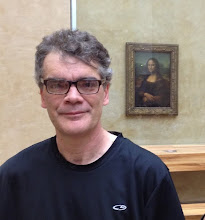After staying with friends for several days in New York, I decided to give them a break and head to Maine early by taking the overnight train, which would also have the benefit of getting me to Maine much earlier in the day. I've ridden coach class coast to coast and thought, this is a piece of cake.
Leaving their downtown loft before they went to sleep, I thought, I'll just have a late night dinner and then a leisurely trip to Penn Station, then get on the train and sleep to Boston. First thing I realized, it wasn't as easy as you might think to find a place open for dinner, not just drinks, at midnight. It was a pain rolling around my luggage searching after the first few blocks.
I am big guy and I have a lot of experience walking around New York late at night, so I wasn't about to get lost or get in trouble, and the weather was fine so mainly I was just tired and grumpy. Finally I found a place that was still serving, and settled in for a leisurely dinner. Then it turned out I was the last customer and the staff was eager to close the kitchen, so I left sooner than I wanted to, and walked over to the subway.
I seldom stay up after 10pm these days, so I was getting pretty tired. I got to Penn Station around 1:30 and had to prop my eyes open with toothpicks until the 3:15 AM departure of train 66. Once on board the train, I hoped to get some sleep. But the train was full of late night party people leaving NYC and they were drinking and talking loudly, making sleep impossible.
Gradually the train emptied and I was able to doze off after New Haven. But then, in Providence, the train filled up again, with commuters headed to Boston, all bright-eyed and having coffee and bagels.
I did eventually get to Maine early in the day, but was totally exhausted. Like others who have taken train 66, after that experience, I said, "never again!"





